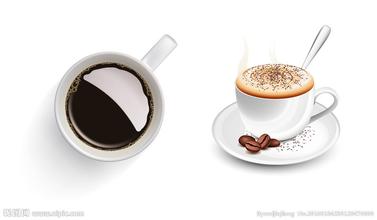Introduction to the characteristics of varieties produced by description and treatment of Grade Flavor of washed Coffee beans
Grade of washed coffee beans
The process of screening is to put the coffee beans on the Internet and shake them back and forth by machine or manually, and the beans the size of a mesh will fall and be removed, and the beans that have been rejected will be screened through a smaller screen. After such layers of screening, the grade of coffee beans was compiled.
After classification, it is divided into AA, A, B, C and PB. AA is the highest, and A, B and C decrease successively. Those below grade C are usually used as feed or fertilizer. In addition, round beans (Pea-Berry) have a special flavor, and beans are already relatively small, so they have their own grade, that is, PB, which is usually more expensive. In addition, we can also see X, Y1, Y2 and T grades, these coffee beans of different sizes, and a lot of defective beans, is quite a poor product, not worth a try.
This classification is generally used in Kenya, New Guinea, Puerto Rico, Zimbabwe, Tanzania and Island Ganda and other places, only above the AA grade is eligible for selection of coffee. In addition, many Brazilian coffee also use this classification, which only directly means 19, 18, 17. Instead of AA, A, B, C classification.
two。 Graded by the number of points of defective beans (Imperfection):
This is the earliest method of classification and is still being used in many parts of Brazil. The method of identification is to randomly take 300 grams of specimens and put them on black paper, because black paper can best avoid reflection. Then, the professional appraiser carefully inspects the defective beans in the sample and accumulates different scores according to the types of defective beans, such as 1 black bean, 1 pebble, 5 big pebble, 1 broken bean, 1 pest bean, 1 sour bean, 1 big dried peel, 1 middle dried peel and 1 small dried peel. 5 unshelled beans count as 1 point, and 3 shell beans count as 1 point. After the identification is completed, the evaluation level is NY2~NY8 according to the cumulative defect score, and there is no NY1. If you want to buy first-class (NY1) Brazilian beans, it will make a joke. By the same token, only the highest grade is eligible for selection of coffee.
This classification method is also used for coffee beans in Indonesia, and the identification method is roughly the same as the calculation of defect scores. However, the final grading method is different, Indonesian beans are mainly divided into 6 grades, and Gr1~Gr6. I have tried Gr1's Sumatran manning coffee, which has excellent consistency and mellowness. no wonder it was the highest in the coffee world before the emergence of Jamaican Blue Mountain Coffee.
Ethiopia also uses this method, and the highest grades of washed beans are Gr1 and Gr2. The highest grade of sun-dried beans is Gr3.

Important Notice :
前街咖啡 FrontStreet Coffee has moved to new addredd:
FrontStreet Coffee Address: 315,Donghua East Road,GuangZhou
Tel:020 38364473
- Prev

What are the advantages of high-altitude coffee beans? what's the difference in flavor?
What are the benefits of high-altitude coffee beans? what are the differences in flavor? 3000-6000 feet about 1000 meters to 2000 meters high altitude provides ideal conditions for coffee growth: an average annual frost-free climate of 60-70 degrees Fahrenheit, about 80 inches of moderate rainfall, and abundant sunshine. Coffee beans grow slowly in cold mountain areas, but the slow ripening process makes the sugar content of coffee beans.
- Next

Description of Flavor by Coffee Bean Red Honey treatment Variety characteristics of manors in producing areas
If you are a roaster, in order to provide better coffee beans, you need to have a good understanding of the origin of raw beans, the height of planting and the method of processing, because these factors can help you better mix and mix unique coffee. Of course, when buying honey to treat coffee beans, don't forget
Related
- Guji coffee producing area of Guji, Ethiopia: Humbela, Shakiso, Wulaga
- What is the most expensive variety of Qiloso in BOP multi-variety group?
- How to store the coffee beans bought home?
- Why are Yemeni coffee beans so rare now?
- Ethiopian Sidamo all Red Fruit Sun Sun Santa Vini Coffee beans
- SOE is mostly sour? What does it mean? Is it a single bean? what's the difference between it and Italian blending?
- Is Italian coffee beans suitable for making hand-brewed coffee?
- How to choose coffee beans when making cold coffee? What kind of coffee beans are suitable for making cold coffee?
- Just entered the pit to make coffee, what kind of coffee beans should be chosen?
- Can only Japan buy real Blue Mountain Coffee? What are authentic Jamaican Blue Mountain coffee beans?

